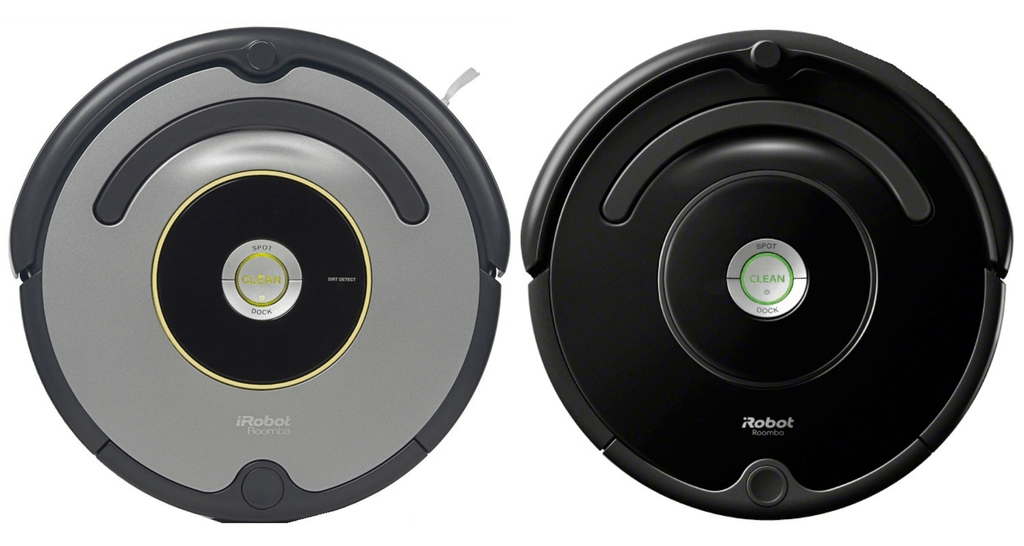The Roomba 675 is one of the most popular 600 series robots ever. It is so popular, in fact, it is still being sold through iRobot, alone with several other retailers, online vendors and outlets. The Roomba 670, originally released in Australia, made its way around Europe before finally landing in North America.
If you are in the market for a new budget-friendly robot, want a new vacuum for a second floor or basement, how do you know which one to pick? This article will show you the two models in detail and compare them against each other in order to help you decide which is the best Roomba model for you. If you are short on time: Pick the one with the lowest price, they are the same robots.
Contents
Differences between Roomba 670 and 675
The Roomba 670 and 675 have a lot of things in common, almost everything, actually. What are their differences? Have a look.
[easyazon_image align=”none” height=”500″ identifier=”B07JD8PVT3″ locale=”US” src=”https://smartrobotichome.com/wp-content/uploads/2020/04/41AitpSOBjL.jpg” tag=”srh-easyazon-20″ width=”500″]
[easyazon_image align=”none” height=”500″ identifier=”B07DL4QY5V” locale=”US” src=”https://smartrobotichome.com/wp-content/uploads/2020/04/413NfvafJaL.jpg” tag=”srh-easyazon-20″ width=”500″]
- Color options. The Roomba 675 is black with black trim while the Roomba 670 has two colors. Commonly found in white with black trim, the 670 is also available in gray with black trim.
- There are multiple stores and online shops where the Roomba 675 is still for sale. The Roomba 670 has a more limited availability.
Similarities between Roomba 670 and 675
Everything feature and performance-wise about these two robots is the same. The different colors and model numbers came about because of where they were originally released. Here are the more important features that these two have in common.
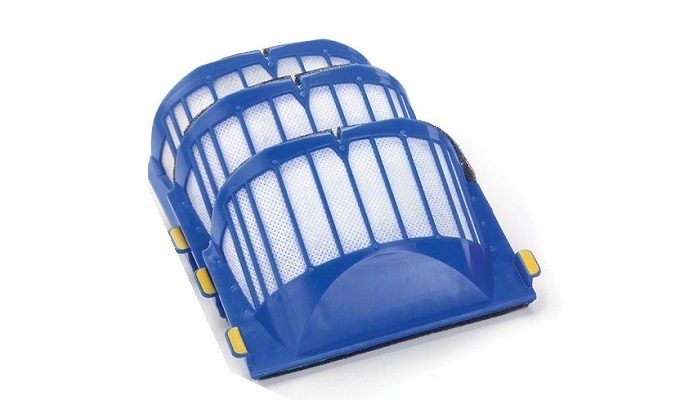
- Automatic recharge. Both robots will run around cleaning your home for about 90 minutes and then return to the Home Base charging station to recharge on their own.
- Standard filtration. You won’t find HEPA filtration on either model, instead the Roomba 670 and 675 both use the AeroVac standard filter.
- Wireless communication. The two robots are equipped with a wireless chip so you can use voice commands or voice controls to operate either.
- Extraction method. Both models use a bristled brush roller to lift and collect dirt and debris.
- The Roomba 670 and 675 are both compatible with the dual-mode virtual wall barriers, though neither come with one.
- Navigation methods. The two robots use the original iAdapt sensor-based navigation system to maneuver through your home.
- Each model comes with the full 1-year iRobot warranty for worry-free operation.
Comparison Table
Here you can see any all features, options and add-ons that the two Roomba models have to offer.
| Roomba 670 | Roomba 675 | |
| Size | 13.3×13.3×3.6 inches | 13.3×13.3×3.6 inches |
| Weight | 7.8 pounds | 7.8 pounds |
| Navigation | iAdapt 1.0 | iAdapt 1.0 |
| Battery | 1800mAh Lithium-ion | 1800mAh Lithium-ion |
| Runtime | Up to 90 minutes | Up to 90 minutes |
| Charge Time | About 3 hours | About 3 hours |
| Automatic Recharge | Yes | Yes |
| Entire Level Clean | No | No |
| Filter | Standard | Standard |
| Carpet Boost | No | No |
| Drop Sensors | Yes | Yes |
| Bump Sensors | Yes | Yes |
| Dirt Detection Sensors | Yes | Yes |
| Camera Navigation | No | No |
| Wireless Communications | Yes | Yes |
| Mobile App | Yes | Yes |
| Voice Controls | Yes | Yes |
| Floor Types | All | All |
| Collection Bin Capacity | 0.5L | 0.5L |
| Containment | None Included | None Included |
| Color Options | 2 | 1 |
| Warranty | 1 Year | 1 Year |
| Price | Check on Amazon | Check on Amazon |
Comparing the Roomba 670 and 675 in Detail
Because the two robots are near identical in every facet, it is pointless to do a full comparison review. Each round would be a tie, and the results would be the same. Instead, we will look at each of the feature sets one at a time to give you a better idea of how the Roomba robots work.
Then, I will show you what to expect with these two models when they are cleaning your floors instead of watching a video of them cleaning in a lab-testing environment. By the end, you will know what to look for and expect from these two wallet-saving Roomba models.
Basic Operation Features
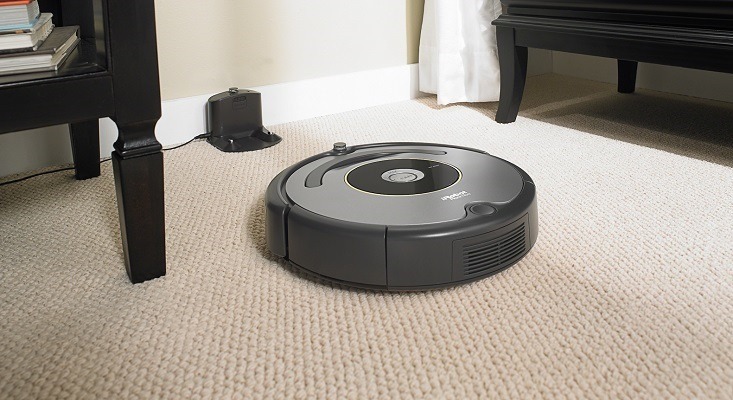
The basic operation features are the little things that make the robot go and clean that all models have. Batteries, for example, or extractor bars are basic operation features.
For the Roomba 670 and 675, the battery packs are 1800mAh cells that power the robots for up to 90 minutes. If you have more carpeting than hard flooring, you can expect that time to drop by about half an hour.
When the batteries get low, the two robots will head back to the charging station to recharge. However, they will not resume cleaning on their own after the charge cycle is complete. Covered below, neither of these robots has the capability of mapping, so they wouldn’t know where to return to, even if they could.
You will also note that the wheels can get tangled with hair or strings. This is normal and should be part of your regular maintenance regimen. The rear wheels power the robot and will go bad, eventually. You can remove each one, replace the motor and have a new wheel when needed. Because of this, the wheels are not part of the warranty, much like batteries, filters, and brush rollers.
The navigation system is called iAdapt. It uses two primary types of sensors to move around you home. The first, the bump sensors, alert the robot as it is speeding along, of any obstacles they detect. The robot slows a bit and bumps into the obstacle, and if it cannot pass, it changes direction.
The drop sensors have double duty. The first part is to detect drops, ledges and edges that are taller than about half an inch. When detected, the robot stops and changes direction. The second part is to determine if the area cleaned is actually clean.
Using infrared lights, the drop sensors also detect when the space isn’t cleaned yet and the robots will do a 360-degree loop to go over the area one more time.
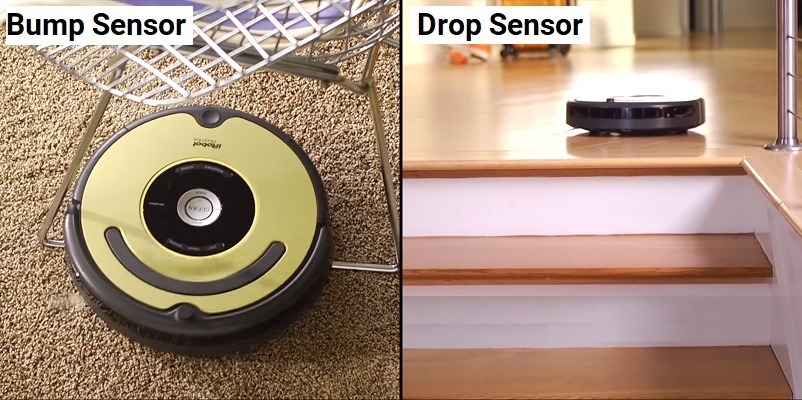
There aren’t any cameras on these models. That comes later in the 900 series robots, like the Roomba 980. Using iAdapt 2.0, those robots can map your home, and resume cleaning after a charge. The 670 and 675 don’t have any way of mapping your home, so they don’t know where they have been or what may be left over after a charging cycle.
Filtration and Extraction
The AeroVac 3-stage cleaning system has been replaced by the AeroForce cleaning system. However, the 600 series make great use of the AeroVac functionality. Suction, filtration and collection are accomplished by the various parts working together.
They complete the extraction method for the suction phase with two rollers. The primary roller is a bristle brush roller that grabs debris and lifts it into the chamber for suction and collection. The second roller is a rubber paddled roller that has the primary job of keeping the brush roller free of debris build-up.
While these aren’t the best methods of extraction in the industry, they work well for what they are capable of. The filtration, like the extraction, isn’t the best on the market, but it works.
The AeroVac standard filter is not HEPA rated. It will capture larger debris and particles to 10 microns in size. However, in-home allergens and bacteria may still get through. For HEPA rated filters, you will need to upgrade to the 800 series robots or newer.
Control Options Including WiFi

There are various methods of controlling the two Roomba robots. First, you have the local controls. You don’t need anything special to use them, except a finger or two to push them with. The large “Clean” button will send the robot off to perform a cleaning cycle.
You also have the option of sending the robot back to the charging station or performing a spot clean. This is where it spirals over a 3-foot area doing a detailed clean of that spot.
However, both models use WiFi communications and allow you more controls variables. You can use the iRobot Home app to name your robot, create cleaning schedules and get various reports of each cleaning, battery usage and charge times. The mobile app will be the best control option there is. However, if you don’t have a home wireless network, you can only use the local controls.
Finally, there are voice controls available. Once set up through the WiFi you can access cleaning cycles with voice controls through Amazon Alexa or Google Assistant devices. The voice controls give you a few more options than the local controls, but the basic functionality is still limited.
Containment Methods and Options
For these two models, the containment options are virtually nonexistent. Both of the robots are fully compatible with the dual-mode virtual wall barriers. Aside from digital containment such as that found in the latest Roomba s9 models, the dual-mode barriers are among the best containment options around.
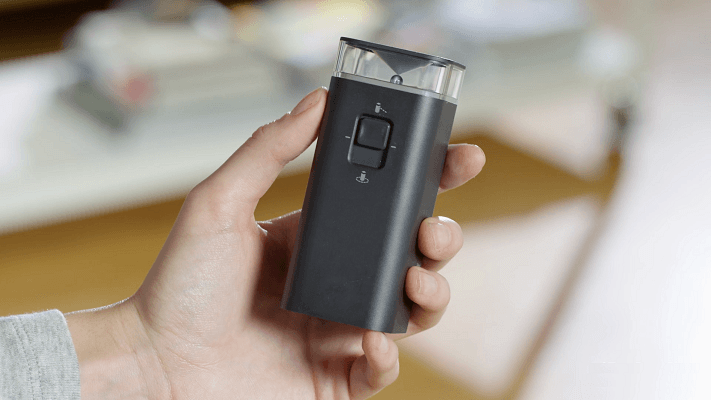
The problem is that the Roomba 670 and Roomba 675 do not come with these barriers. Unless you purchase an expansion kit, the base model robots only come with the robots, charging stations and cleaning tools.
Without the towers, you can use physical barriers instead. Weighted pool noodles, for example, or large shoes, work decent enough. The best bet is to purchase a two-pack of the barriers along with your robot and not have to worry about the machines running into Butch’s water bowl or knocking in to the Christmas tree.
Real World Cleaning
We’ve all seen the marketing videos where the robots are put in a controlled environment and a specific amount of a particular food is placed in the path. See how wonderful and effortless they clean?
Let’s get real. You don’t live in a lab testing world and your spills, dirty footprints and spilled cereal aren’t portion controlled. So, let’s find out how these two robots perform in the real world that you live in.
The Roomba 670 and 675 on Carpeting
Carpeting will be the biggest challenge here for some owners. If you have wall-to-wall carpet, for example, you can kiss the 90 minute runtime goodbye. More than likely you will be lucky to get 45 minutes. This isn’t horrible, but it will mean more frequent cleaning cycles need to run.
Low-pile, tight woven carpets will see the most benefit here. Medium and high-pile carpeting will have a thorough going over, but the results will vary. If your carpeting consists of throw rugs or area rugs, you can expect a hit or miss here.
Some floor transitions may be too high for the robot to get on the rugs. It will try for a while though, hoping to get the right angle of approach. In most cases, this won’t be an issue, but thicker rugs will see problems.
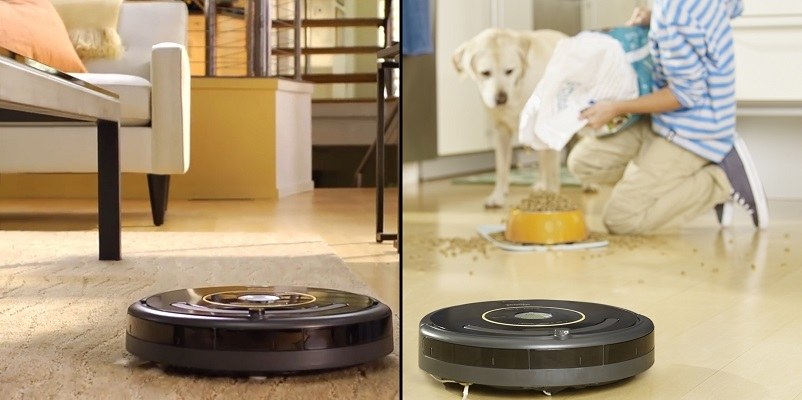
The Roomba 670 and 675 on Hard Flooring
Hard flooring will be the biggest benefactor of the 600 series robots. They get along edges well enough, though you will see debris left in the corners. They try, of course, but the shape and side brushes prevent deep corner cleaning.
For the most part, though, a single pass over hard flooring will result in a clean good enough for you to keep the large upright vacuum in the closet for an extra week or two. Of course, you still need to mop, but the Braava 380t is here for that.
There have been a few scattered reports of the 670 and 675 scratching hard flooring surfaces. While these are rare, it is important to mention. Soft flooring, like pine, or sealed surfaces may notice small marks or brush stroke scratches after repeated runs. Mostly, though, I wouldn’t worry about this.
The Roomba 670 and 675 on Pet Hair
Pet hair is no match for the Roomba 675 or 670. However, a lot of pet hair may be. The robot wants to pick it all up, and has the capacity to do so. The brush roller will need some assistance, though.
Pet hair clings to the bristles like a magnet, and you will need to perform a regular cleaning of the roller to keep it working at its best. When you first get the robot, this may mean stopping a cycle in the middle to clean the brush roller. It can get tedious.
However, the robots are good at keeping up with the floor maintenance and after a few initial runs, you will find yourself having to clean the rollers less and less. Eventually you can even get down to once a week or less. Of course, this depends on the number of shedding pets and how much they shed.
Frequently Asked Questions
Now I will take the time to answer some of the common questions about iRobot and the Roomba 675 and 670. If you have other concerns or questions, use the comment section below.
Q. How do I contact iRobot customer service?
A. The fastest method is to call 1-800-727-9077. If you want to use the live chat feature or send an email instead, you can get the appropriate links on the iRobot contact page. (the chat link is at the bottom)
Q. How many cats can fit on a Roomba 670?
A. It depends on how thin you slice them. Not as many that can fit in your dishwasher, though. Honestly, while cats riding Roombas make for funny videos, it will void the warranty and cause the Roomba to overheat. Performance will suffer as well, which none of us want.
Q. Do I have to have WiFi to use a Roomba?
A. No. All Roomba vacuums come with local controls that you can use instead of the mobile app or voice commands. The controls are a bit limited, but you will still get clean floors without WiFi.
Q. Where can I buy a Roomba online?
A. The best place to purchase your new-in-box Roomba 670 or 675 is through Amazon. There you will get the best service, easiest returns or warranty claims and fastest shipping. You can also purchase the Roomba 675 through iRobot’s website or Walmart.com.
What I Like About the Roomba 670
- Multiple color options even if the gray and black model is rare.
- Simple cleaning solution for smaller homes.
- Cleans up pat hair without fuss.
What I Like About the Roomba 675
- Readily available from many locations.
- Easy to follow maintenance routine.
- Performs well on all surfaces.
Conclusion
The Roomba 670 and 675 are identical in almost every way. With the exception of a second color choice for the 670 and where it was initially released, there isn’t a difference.
If you have a smaller floor plan, a lot of hard flooring and want to have cleaner floors on a budget, the Roomba 670 and 675 are ideal companions. Which one should you go with? The easy pick is the Roomba 675 as it is more readily available. However, if you can find the Roomba 670 and it is priced lower than the 675, buy it.
